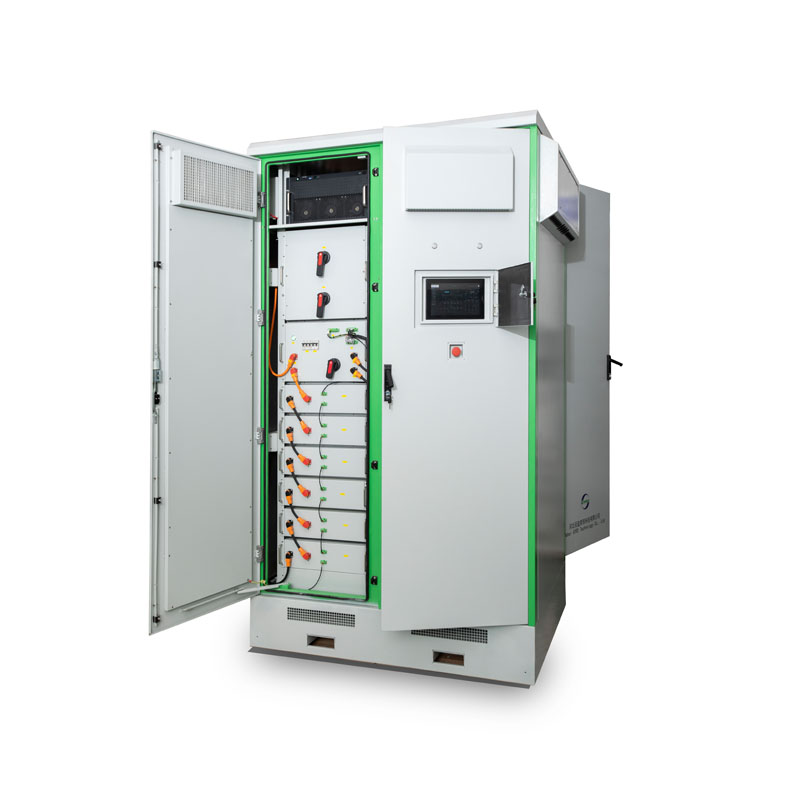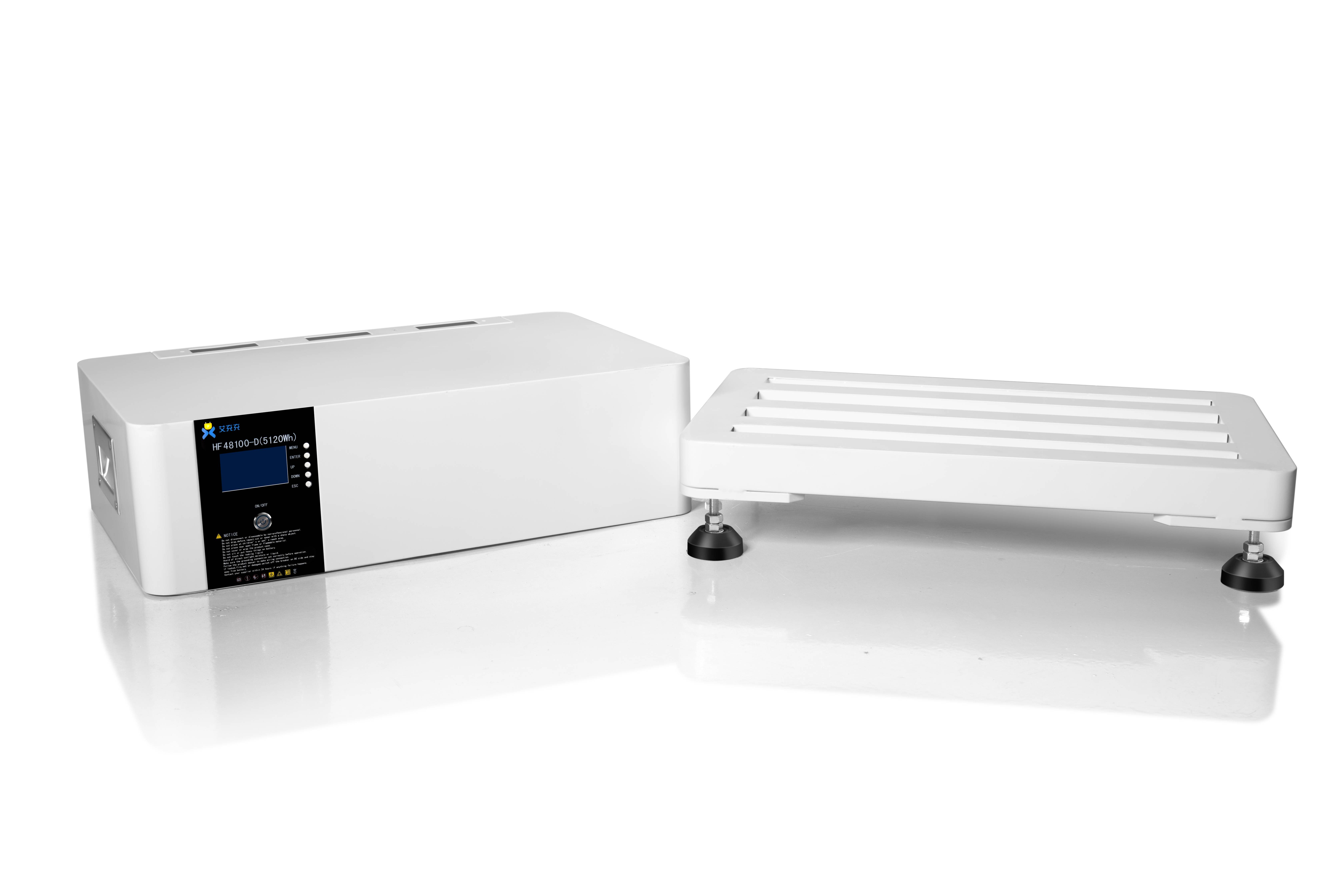Power supplies are a frequently misunderstood—and overlooked—PC component. Many users choose a PC power supply based on total wattage alone, assuming thathigheris always synonymous withbetter. Others pay no attention to their power supply unit (PSU) selection at all, and settle for whatever abomination arrived with their machine. But considering how important a good power supply is to a system’s stability and long-term reliability, it’s a shame that PSUs get so little attention in comparison to sexier components likegraphics cardsandSSDs.
It doesn’t help that the power supply market is awash with products from unscrupulous manufacturers that use substandard components and overstate the hardware’s capabilities, especially now that booming cryptocurrency prices have createdhuge demand for graphics cardsand PSUs. But choosing a solid, efficient power supply is possible if you arm yourself with the right knowledge.
This PSU guide can help you identify the best power supply foryourneeds. Meanwhile, this power supply installation guidecan help you get set up once you’ve chosen a PSU. Let’s dig in.
Choosing a power supply
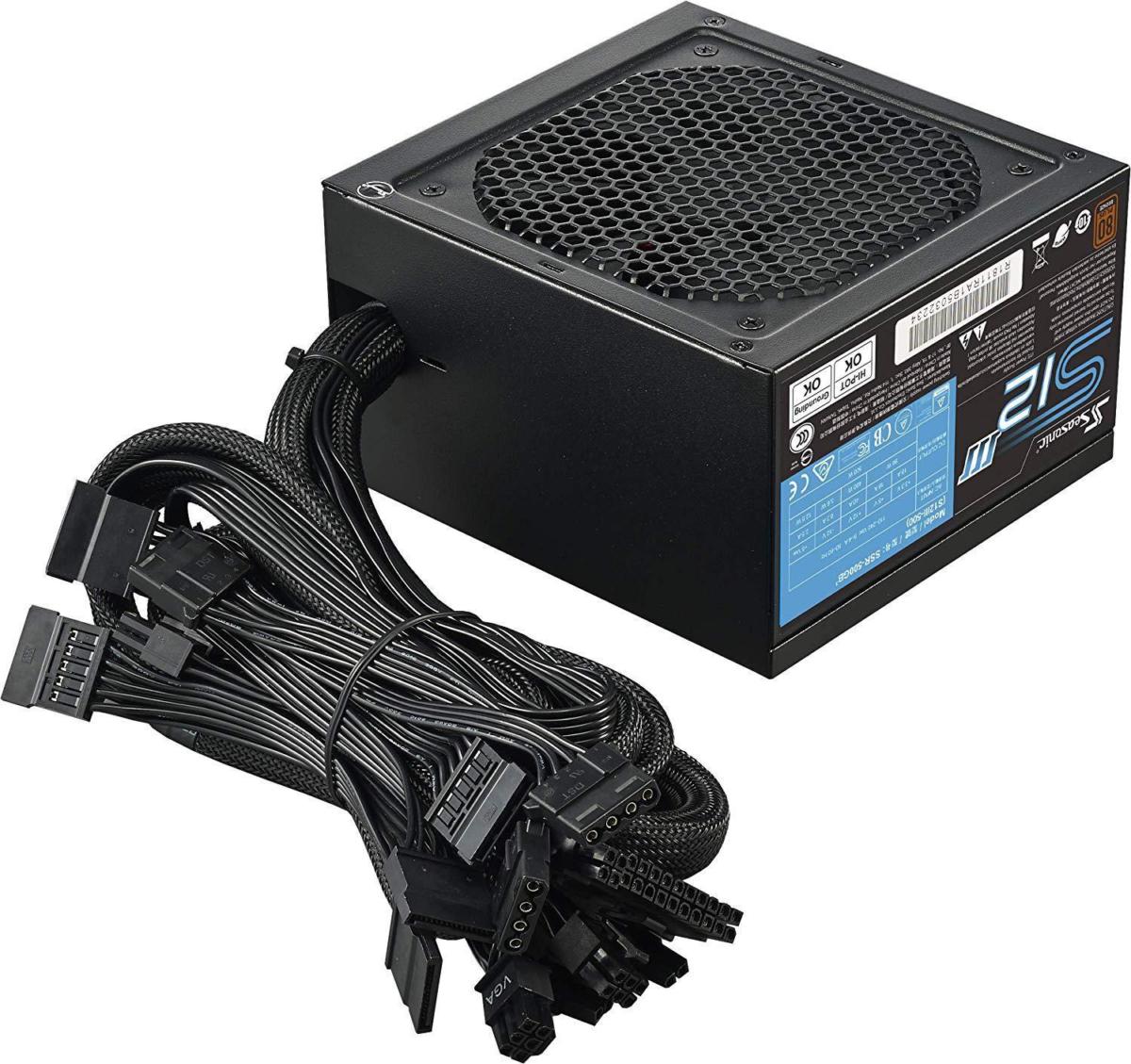
Devote as much thought to your power supply as you do your PC’s processor.
There is no single, universal rule for selecting a high-quality power supply. Nevertheless, various indicators provide circumstantial evidence of PSU quality, and some guidelines are generally helpful.
First, always buy a power supply from a reputable manufacturer, and look for reviews of it before you buy. Avoid cheap, generic power supplies, which tend to be substandard. Look for reputable brands that offer solid warranties and support. Corsair, Seasonic, EVGA, and Antec are manufacturers with reputations for producing high-quality power supplies, though even they may offer a few duds among all the studs. Do your homework!
Larger, heavier units are preferable to puny, lightweight models. Higher-quality power supplies almost always use bigger and better capacitors, chokes, and other internal components, and they come outfitted with larger heatsinks for superior heat dissipation—all of which translates into more weight. Larger cooling fans, which typically move more air while making less noise than smaller fans, are another plus.
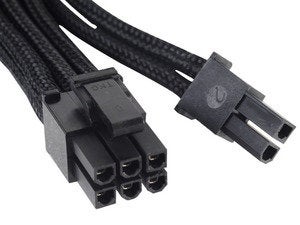
Of course, you should also check the PSU’s connectors to confirm the unit is compatible with your particular system. The term20+4 pinrefers to a connector that can function as either a 20-pin connector or a 24-pin connector. In the 6+2 pin connector shown at right, you can snap two of the pins in the connector on or off to suit your needs.
The vast majority of consumer PCs use standard ATX power supplies. Smaller units and units specially designed for enterprise and server applications are also available; but for common desktop systems, ATX power supplies are it.
When searching for a power supply, keep your eyes on three crucial features: power output, rails, and efficiency. Other specifications and features are important, too, but these three directly affect the PSU’s performance.
All about output
Manufacturers usually list their power supplies’ output in watts. A higher-watt PSU can supply more power. Desktop power supplies have a power output rating of from 200 watts to 1800 watts (for ultra-high-end, enthusiast-class products). Wattage ratings higher than that would exceed the capabilities of a typical 15-ampere electrical outlet. The important number here is the one for sustained or continuous power, not the one for peak power. Most power supplies can operate at peak power for only brief periods.
Ideally your unit will delivers plenty of power to your components and offers some extra headroom in case you want to attach additional components later. Most power supplies hit their peak efficiency levels with loads in the range of 40 to 80 percent. Building to about 50 to 60 percent of a PSU’s capacity is advisable to achieve maximum efficiency and yet leave room for future expansion.
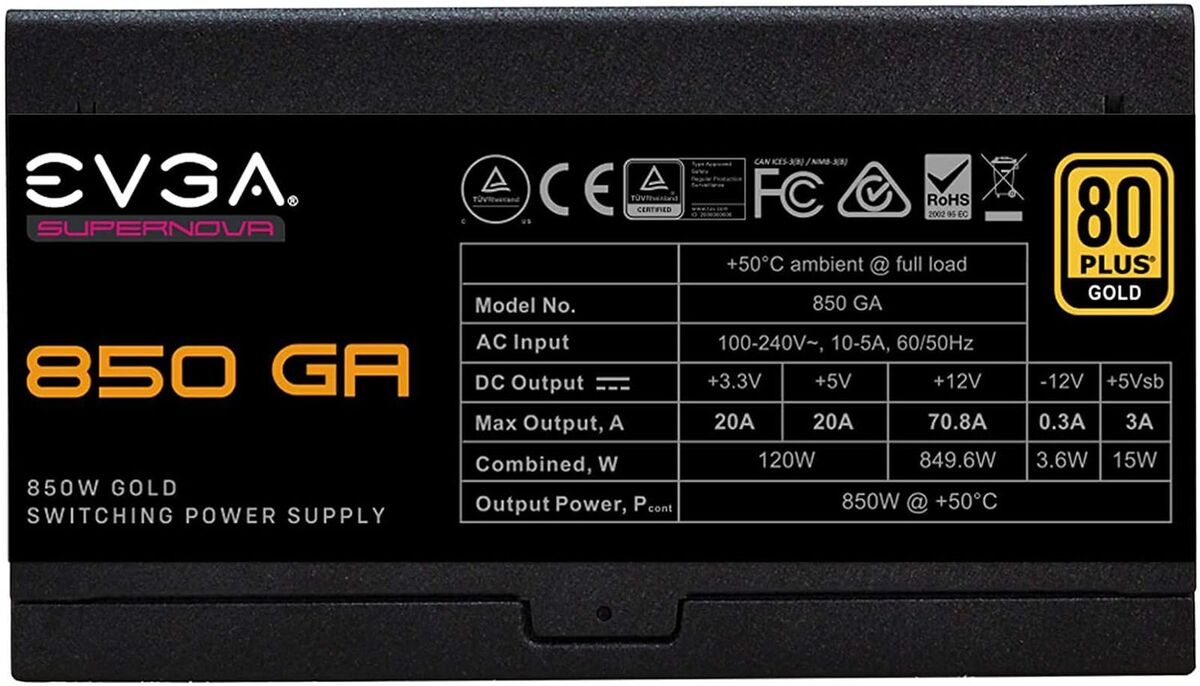
Information on an 850W EVGA power supply.
For example, if the maximum power or combined TDP (total design power) of your system’s present components is 300 watts, a 600-watt PSU would be a good fit. In a high-end system loaded with components that may peak collectively at 700 watts, a 1200-watt PSU would work well. You can get by with lower-capacity units if you don’t think you’ll ever need to expand your system, but if you can afford it, choosing a higher-capacity PSU is a better bet.
Many modern gaming systems with a 6 or 8-core CPU and a midrange to high-end graphics card should get by with a 650W to 850W power supply, with 750W being a long-time sweet spot for gamers. More powerful hardware requires higher wattages,especiallyif you plan on overclocking.
OutervisionandSeasonic’shandy-dandy PSU wattage calculators invites you to input your build components in exacting detail—right down to CPU overclocking voltages and specific water-cooling components—and then spits out a ballpark power-supply wattage for your system.
On the subject of wattage, one common power supply myth holds that higher-wattage power supplies necessarily consume more power. Untrue. All else being equal, a 500-watt power supply won’t consume any less power than a 1000-watt unit. That’s because a system’s components—not its PSU—dictate its power consumption. If you have 300 watts’ worth of components in a system, the system will consume 300 watts under load, regardless of whether the system is outfitted with a 500-watt power supply or a 1000-watt one. Again, a PSU’s wattage rating indicates the maximum amount of power the unit can provide to your system’s components, not how much power it consumes from the outlet.
An efficient PSU is a better PSU
A power supply’s efficiency rating is important because higher-efficiency units tend to have better components, waste less power, and generate less heat—all of which contribute to less fan noise. A power supply with an efficiency rating of 80 percent provides 80 percent of its rated wattage as power to your system, while losing the other 20 percent as heat.

Look for units with “80 Plus” certification. Though the certification process isn’t especially stringent, 80 Plus-certified units are confirmed to be at least 80 percent efficient; and 80 Plus has tiers for even more-efficient units, including 80 Plus Bronze, Silver, Gold, Platinum, andTitaniumcertifications. Power supplies in the higher certification tiers tend to command very high prices, however. Average users with average needs should probably stick to the simple 80 Plus or the 80 Plus Bronze level unless they find a particularly juicy deal on a Silver or Gold PSU.
Corsair provides a thoroughoverview of power supply efficiencyand of the 80 Plus program, if you’d like to learn more.
The great rail debate
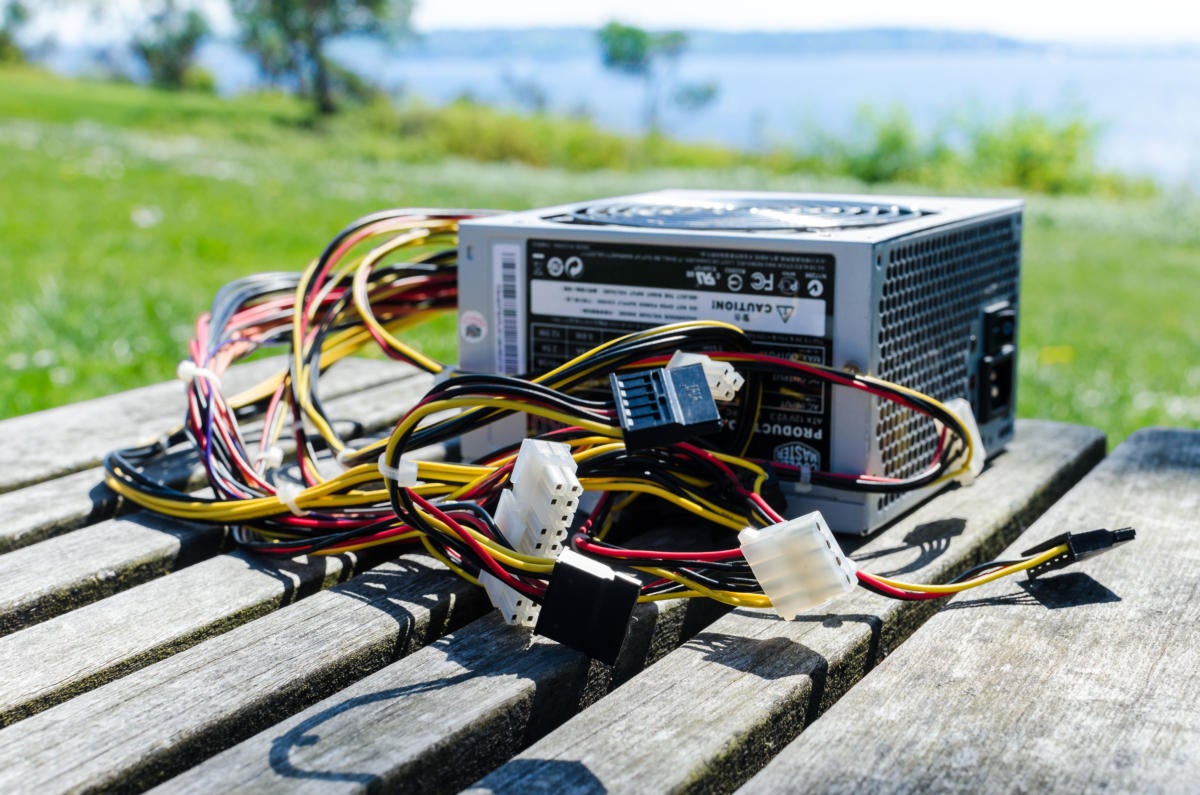
In addition to identifying output power, manufacturers will specify the number of +12V rails their PSUs contain. A “single-rail” power supply has a single, high-power +12V rail for feeding power to hungry system components. A “multi-rail” unit divides its output between two or more +12V rails.
In a single-rail design, all of the power from the supply will be available to any component connected to the unit, regardless of the connector or cable used. In the event of a failure, however, a single-rail power supply has the potential to shoot much more current into your components.
On the other hand, that disadvantage becomes a major advantage if you ever encounter a catastrophic failure. The OCP mechanisms in a multi-rail power supply monitor each rail and will shut the whole unit down if they detect an overload on any of the rails. The OCP on single-rail units kicks in only at much higher amperages, which couldlead to a major melt-downif a serious overload occurs.
So which is better type of power supply is better—single-rail or multi-rail? Neither, usually. From a performance standpoint, both work equally well; and in general both are very safe to use. If you’re building an especially powerful system, though, multi-rail OCP provides an extra layer of safety in case something short-circuits, lessening the odds of frying your costly components during a computing catastrophe.
Cabling: Piecemeal or whole hog?
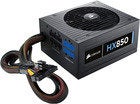
Another consideration is cabling. Power supplies are available with hard-wired cabling, with partially modular cabling, or with fully modular cabling. In modular power supplies, you can add or remove cabling from the PSU as needed to avoid case clutter.
Technically, a power supply with hard-wired cabling is optimal because it requires no additional connections between the unit’s internal PCB and the connector that will ultimately be plugged into one of your components. One end of the cable is soldered into the PSU’s PCB and the other end terminates in a standard connector, with no breaks in the line. Whenever you introduce an additional connection between the PSU and your components—as happens with modular power supplies—you add more resistance and another potential point of failure into the line; and any increase in resistance translates into lost efficiency.
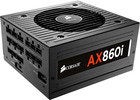
That said, the additional resistance is normally minimal and not a cause for concern for most users. Meanwhile, modular cabling greatly simplifies keeping the interior of your case nice and clean—just don’t connect any superfluous cables to keep the clutter down. Most people prefer modular PSUs, though they cost a bit more than nonmodular models.




 (Photo: Zlata Ivleva)
(Photo: Zlata Ivleva)